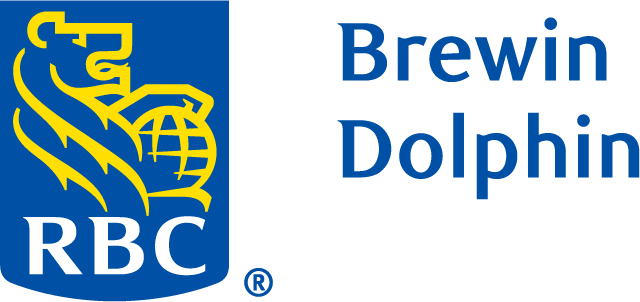The 2023/24 tax year began on 6 April and introduced several significant changes to pensions and tax. A financial adviser can explain how these could affect you, as well as some of the ways to make your finances and investments more tax efficient.
In the meantime, here’s a summary of the key measures, from RBC Brewin Dolphin.
1. CGT exemption slashed in half
The capital gains tax (CGT) exemption has more than halved from £12,300 to £6,000, with a further reduction to £3,000 set for 2024/25. Any profits (‘gains’) that exceed the exemption will be taxed at 20% for higher-rate taxpayers and 10% for basic-rate taxpayers. Gains on second properties are taxed at 28% and 18%, respectively.
The reduction means a higher-rate taxpayer who makes a capital gain of £20,000 in the 2023/24 tax year could face a CGT bill of £2,800, rising to £3,400 in 2024/25. This is a considerable increase from £1,540 in the 2022/23 tax year.
As the CGT exemption can’t be carried over from one tax year to the next, one of the many ways to manage your CGT liability is to make full use of the exemption each year. Investing in an ISA could also help to reduce your CGT liability, as gains on investments within an ISA are exempt from CGT.
2. Dividend allowance cut to £1,000
The annual dividend allowance – the amount of dividend income you do not have to pay tax on – has been cut from £2,000 to £1,000, with a further reduction to £500 coming in 2024/25. If you exceed the dividend allowance, you’ll pay tax on the excess at 8.75% if you’re a basic-rate taxpayer, 33.75% if you’re a higher-rate taxpayer, or 39.35% if you’re an additional-rate taxpayer.
In practice, this means a higher-rate taxpayer receiving dividend income of £5,000 will pay dividend tax of just over £1,350 in 2023/24, up from £1,012.50 in 2022/23. This will increase to £1,518.75 in 2024/25.
Dividends received on investments inside an ISA or by pension funds are tax free, so maximising your annual £20,000 ISA allowance or your pension annual allowance are two of the ways to mitigate dividend tax.
3. Pension lifetime allowance charge scrapped
The pension lifetime allowance charge has been abolished, ahead of the planned full removal of the lifetime allowance next year. This means there is no longer a tax charge on the amount of money you can build up in pensions tax efficiently over your lifetime. Previously, those with more than £1,073,100 in pensions had to pay a tax charge on the excess when they came to draw their pension benefits.
The pension tax-free lump sum has been capped at £268,275, so even though it is now possible to build a larger pot without incurring a lifetime allowance tax charge, the tax-free lump sum will not grow with it. This may affect the timing of your decision to start drawing money from (or ‘crystallise’) your pension.
4. Annual allowance increased to £60,000
The pension annual allowance – the maximum amount you can save into pensions in any one tax year without having to pay a tax charge – has increased from £40,000 to £60,000. This means you can pay up to £60,000 or 100% of your UK relevant earnings (whichever is lower) into pensions each year and benefit from tax relief.
Very high earners could have a lower annual allowance because of the annual allowance taper. This applies to those with an ‘adjusted income’ above £260,000 per year (previously £240,000). The taper reduces your annual allowance by £1 for every £2 of adjusted income that exceeds this threshold, down to a minimum floor of £10,000 (up from £4,000)
5. MPAA increased to £10,000
The money purchase annual allowance (MPAA) has been raised to £10,000 from £4,000. The MPAA is triggered when savers flexibly access defined contribution (DC) pensions for the first time, and effectively replaces their standard annual allowance.
6. State pension increased to £203.85 a week
The full state pension has risen by 10.1% to £203.85 per week, which works out at around £10,600 per year. The increase means retirees who qualify for the full amount will receive an extra £1,000 (before tax) than they did last year.
7. Scottish income tax rates increased by 1%
Scots with higher incomes will pay more tax this year, as the higher and top rates of tax have each risen by one percentage point. The higher rate is now 42% on income above £43,662, while the top rate is 47% for those earning above £125,140.
These changes mean Scots earning £50,000 year will pay an additional £63.38 in tax in 2023/24, while those earning £150,000 will pay an extra £2,432.08 in tax, according to the Chartered Institute of Taxation1.
8. Additional-rate income tax threshold lowered
The additional-rate income tax threshold (top rate in Scotland) has been lowered from £150,000 to £125,140. For someone living in England or Wales who is earning £150,000, the change means they could face an income tax bill of £53,703 in 2023/24, compared to £52,460 in 2022/23 – an increase of nearly £1,250.
9. Other income tax thresholds frozen until 2028
The personal income tax allowance – the amount you can earn each year before you start paying income tax – has been frozen at £12,570 until 2028, while the higher-rate income tax threshold has been frozen at £50,270. This could mean more people move into a higher tax band due to inflation. The point at which the personal allowance starts to be tapered also remains frozen at £100,000; this could see more people start to lose their personal allowance and facing an effective 60% tax rate on income between £100,000 and £125,140.
One way to potentially reduce your income tax bill is to contribute to a pension.
If your salary and/or bonus means you cross into a higher tax band, making a personal pension contribution could result in your ‘adjusted net income’ falling below the threshold, potentially avoiding a higher rate of tax.
10. IHT nil-rate band remains frozen
The inheritance tax (IHT) nil-rate band remains frozen at £325,000 until 2028. Together with a surge in house prices over the last decade, this could result in more families being caught in the IHT net and paying tax on inherited assets at up to 40%. There are several ways to mitigate IHT, for example by gifting money while you’re alive or passing on your pension to your loved ones.
Next steps
Understanding how to make the most of your money isn’t always easy, and that’s where getting some smart advice comes in.
A financial adviser can help you make best use of your tax reliefs and allowances, structure your portfolio tax efficiently, and check you’re investing in a way that suits your individual needs. That way, you’ll feel more confident that you’re doing the right thing with your money.
________
1https://www.tax.org.uk/income-tax-divergence-entrenched-after-today-s-scottish-budget
Disclaimer:
The value of investments, and any income from them, can fall and you may get back less than you invested. This does not constitute tax or legal advice. Tax treatment depends on the individual circumstances of each client and may be subject to change in the future. Information is provided only as an example and is not a recommendation to pursue a particular strategy. Information contained in this document is believed to be reliable and accurate, but without further investigation cannot be warranted as to accuracy or completeness.
RBC Brewin Dolphin is a trading name of Brewin Dolphin Limited. Brewin Dolphin Limited is authorised and regulated by the Financial Conduct Authority (Financial Services Register reference number 124444) and regulated in Jersey by the Financial Services Commission. Registered Office; 12 Smithfield Street, London, EC1A 9BD. Registered in England and Wales company number: 2135876. VAT number: GB 690 8994 69.



